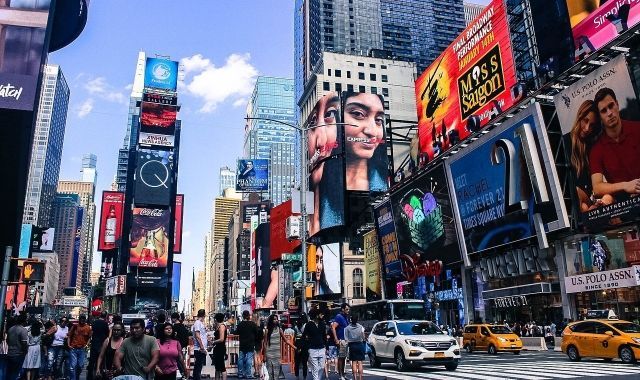
The digital transformation of commerce is no longer just science fiction, but reality (increasingly more augmented). As a result, Cecot has organised a day with entrepreneurs to put "technology at the service of the client’s experience." While innovating in retail is not easy, platforms like Beabloo and BWireless argue for "getting to know the phygital consumer" born in Times Square between the physical and digital stores.
"Customers go from offline to online and vice versa without realising it," says the BD Manager at Beabloo, Pilar Fustero. The stimulus for shopping is as much on the street as in the media or on social networks. Thus, the company moves the marketing for its online commerce to physical stores through a system of digital signals that "do not recognise the customer, but do detect the general physical appearance and age of the customer" through a camera.
Textura’s digital poster
"The digital poster expands the customer’s experience a lot," she says. An example is Textura: "They have a lot of sheets that are difficult to show, but thanks to the digital poster, the customer can see the range of colour and pattern combinations."
With the "anonymous" data collected, a communication campaign is designed that is “adjusted and personalised” to the clientele and that can even include smart screens adapted to the climate and location. At the same time, it allows for measuring the impact through indicators such as gender or age. It is a transformation that Fustero insists has been reflected in the textile company’s sales.
A screen in Times Square
According to Wildbytes’ business developer, Albert Giménez, "an interaction is worth more than a thousand impressions" and that involves the consumer and creates a memory that goes beyond the experience itself. On the demands of Forever 21, Wildbytes dived in head first during 2010, installing the first interactive screen in Times Square, which gets 39 million visitors a year.
More specifically, the platform developed a digital poster through which augmented reality allowed passers-by to talk to the brand. "An interactive experience that was hugely popular with more than 500,000 people a day," he says. The result? Multiplying by 20 the average attention time each person spent on the screen.
Sephora’s interactive mirror
Sephora, one of its flagship clients, is another good example. Wirldbytes created a digital and interactive mirror to establish "an entryway for dialogue" between the brand and the customer. Digital Makeup Mirror reads the main facial features and depending on the characteristics of the customer proposes make-up suited to their face in real time. The results are: 37,000 online impressions and 900 emails sent in 15 days.
"Our task is to preach about the product and explain how this technology can become a point of sale. Augmented reality has a long way to go," he concludes.